 Facebook
Facebook
 X
X
 Instagram
Instagram
 TikTok
TikTok
 Youtube
Youtube
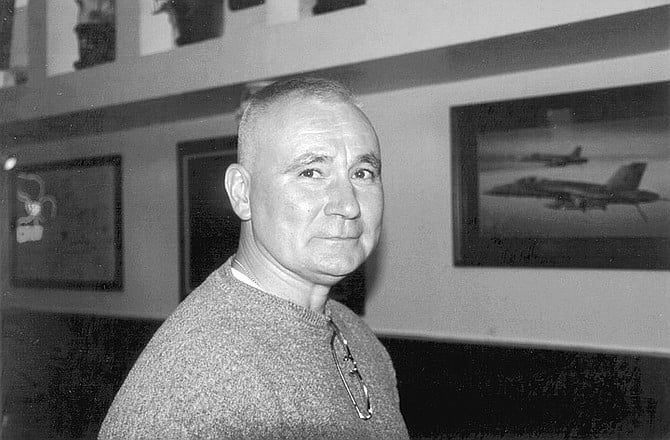
Bradley is an animated woman of 36, whose tousled long black hair and French accent give her an exotic cast. When I acknowledge her accent, she replies, “Yes, I’m sorry, I’m from France,” an apology for her country, which has been thrown in the gutter by some Americans for not supporting the war. Her husband, a weapons officer, is aboard the Constellation in the Persian Gulf. Bustling through the warehouse, she shows me how overstuffed it is with household goods. “There’s too much,” she says. And then an idea pops out: “Wouldn’t it be great if we could find someone in San Diego who could ship the overflow to Iraq?” I stop, a bit incredulous. “To Iraq? Now?”
By Thomas Larson, Aug. 21, 2003 | Read full article
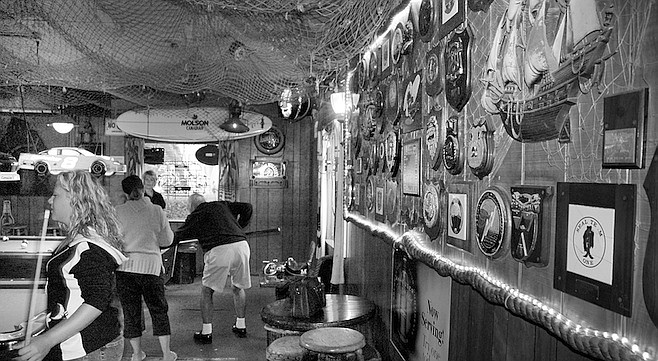
All the recent commotion about U.S. atrocities at Abu Ghraib Prison and elsewhere got me thinking about Ka-Bar knives, which in turn got me thinking about former senator and now member of the 9/11 Commission Bob Kerrey. In his autobiography, When I Was a Young Man, Kerrey offers a cautious mea culpa for killing those Vietnamese villagers one dark night in Than Phong Province. Kerrey admitted men in his SEAL squad used their Ka-Bars on five Vietnamese in a hut near the doomed VC ville where "Kerrey's Raiders" would kill at least 18 women, children, and old men. The Raiders accomplished their chore with automatic weapons, rockets, and grenades.
By Bill Salisbury, July 1, 2004 | Read full article
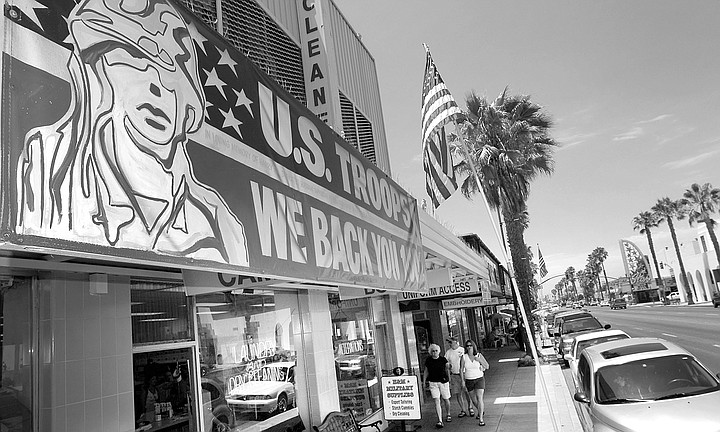
"When they really won me over," Wright added, "wasn't so much when I was in the process of writing them. What really wowed me was after I printed these Rolling Stone articles, and they were very raw. I mean, I wrote about guys by name shooting civilians. I wrote about them using the foulest language, bathroom humor, and things that you might make jokes about, but you wouldn't want your mom to read them, and their moms did read them. I put them through all of this, then some of them got threatened [with disciplinary action], and one guy gets kicked out of the battalion.”
By Ernie Grimm, Aug. 12, 2004 | Read full article
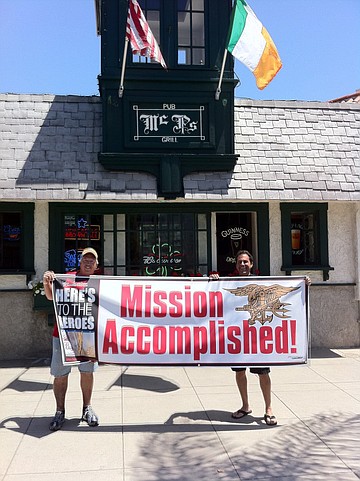
"Several weeks ago, there was a story about a SEAL that supposedly fell out of a helicopter. His name was Neil Roberts. The helicopter took a few hits. He flipped out of the helicopter. They rolled out, the helicopter had to do an emergency landing, and they didn't know he was gone for a while. He hid himself between the rocks until the emergency rescue team realized he was gone and went in to rescue him. He exposed himself to two machine-gun nests and killed [a lot of] bad guys before he was out of ammo and had to surrender. He knew his rescuers were going to be suckered into an ambush, so that's why he got up and exposed himself. He stood there with his hands up and they captured him."
By Robert Kumpel, April 25, 2002 | Read full article

Beginning with Vietnam, American soldiers and Marines have carried the M-16 rifle. And the virtues and vices of the black rifle have been argued by military men and gun enthusiasts ever since. The central issue in the argument is the .223 caliber, or 5.66-millimeter bullet, fired by the M-16. "Before Vietnam," explains Jason Kuyper, manager of Southern California Guns in La Mesa, "the military used a heavier-caliber weapon. It was a .30 caliber, and now it's basically a .22 caliber. There's a significant difference in both the size of the bullet and the energy it delivers."
By Ernie Grimm, May 2, 2002 | Read full article
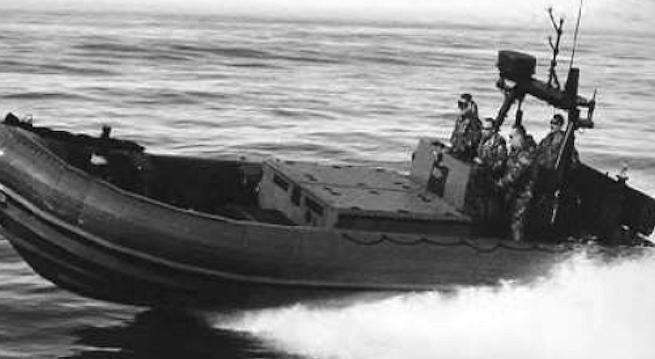
“My Kuwaiti counterpart and squadron commander was Colonel Nasser. Terrific guy. All he wanted to do was kill Iraqis. He’d scare me shitless taking the Duck and the frigates within three miles of the coast looking for targets. His ships had Exocet surface-to-surface missiles, and he was just dying to fire them, but every time he got a radar signature from a target, the U.S. wouldn’t let him pull the trigger. Broke his heart. But what concerned me was the Iraqis had their own surface-to-surface missiles — Chinese Silkworms — with a range of about 40 miles and warheads that could hold chemical and biological agents. I did not like to close that coast, which was just wall-to-wall with booger-eaters.”
By Bill Salisbury, Feb. 6, 2003 | Read full article


Bradley is an animated woman of 36, whose tousled long black hair and French accent give her an exotic cast. When I acknowledge her accent, she replies, “Yes, I’m sorry, I’m from France,” an apology for her country, which has been thrown in the gutter by some Americans for not supporting the war. Her husband, a weapons officer, is aboard the Constellation in the Persian Gulf. Bustling through the warehouse, she shows me how overstuffed it is with household goods. “There’s too much,” she says. And then an idea pops out: “Wouldn’t it be great if we could find someone in San Diego who could ship the overflow to Iraq?” I stop, a bit incredulous. “To Iraq? Now?”
By Thomas Larson, Aug. 21, 2003 | Read full article

All the recent commotion about U.S. atrocities at Abu Ghraib Prison and elsewhere got me thinking about Ka-Bar knives, which in turn got me thinking about former senator and now member of the 9/11 Commission Bob Kerrey. In his autobiography, When I Was a Young Man, Kerrey offers a cautious mea culpa for killing those Vietnamese villagers one dark night in Than Phong Province. Kerrey admitted men in his SEAL squad used their Ka-Bars on five Vietnamese in a hut near the doomed VC ville where "Kerrey's Raiders" would kill at least 18 women, children, and old men. The Raiders accomplished their chore with automatic weapons, rockets, and grenades.
By Bill Salisbury, July 1, 2004 | Read full article

"When they really won me over," Wright added, "wasn't so much when I was in the process of writing them. What really wowed me was after I printed these Rolling Stone articles, and they were very raw. I mean, I wrote about guys by name shooting civilians. I wrote about them using the foulest language, bathroom humor, and things that you might make jokes about, but you wouldn't want your mom to read them, and their moms did read them. I put them through all of this, then some of them got threatened [with disciplinary action], and one guy gets kicked out of the battalion.”
By Ernie Grimm, Aug. 12, 2004 | Read full article

"Several weeks ago, there was a story about a SEAL that supposedly fell out of a helicopter. His name was Neil Roberts. The helicopter took a few hits. He flipped out of the helicopter. They rolled out, the helicopter had to do an emergency landing, and they didn't know he was gone for a while. He hid himself between the rocks until the emergency rescue team realized he was gone and went in to rescue him. He exposed himself to two machine-gun nests and killed [a lot of] bad guys before he was out of ammo and had to surrender. He knew his rescuers were going to be suckered into an ambush, so that's why he got up and exposed himself. He stood there with his hands up and they captured him."
By Robert Kumpel, April 25, 2002 | Read full article

Beginning with Vietnam, American soldiers and Marines have carried the M-16 rifle. And the virtues and vices of the black rifle have been argued by military men and gun enthusiasts ever since. The central issue in the argument is the .223 caliber, or 5.66-millimeter bullet, fired by the M-16. "Before Vietnam," explains Jason Kuyper, manager of Southern California Guns in La Mesa, "the military used a heavier-caliber weapon. It was a .30 caliber, and now it's basically a .22 caliber. There's a significant difference in both the size of the bullet and the energy it delivers."
By Ernie Grimm, May 2, 2002 | Read full article

“My Kuwaiti counterpart and squadron commander was Colonel Nasser. Terrific guy. All he wanted to do was kill Iraqis. He’d scare me shitless taking the Duck and the frigates within three miles of the coast looking for targets. His ships had Exocet surface-to-surface missiles, and he was just dying to fire them, but every time he got a radar signature from a target, the U.S. wouldn’t let him pull the trigger. Broke his heart. But what concerned me was the Iraqis had their own surface-to-surface missiles — Chinese Silkworms — with a range of about 40 miles and warheads that could hold chemical and biological agents. I did not like to close that coast, which was just wall-to-wall with booger-eaters.”
By Bill Salisbury, Feb. 6, 2003 | Read full article
Comments